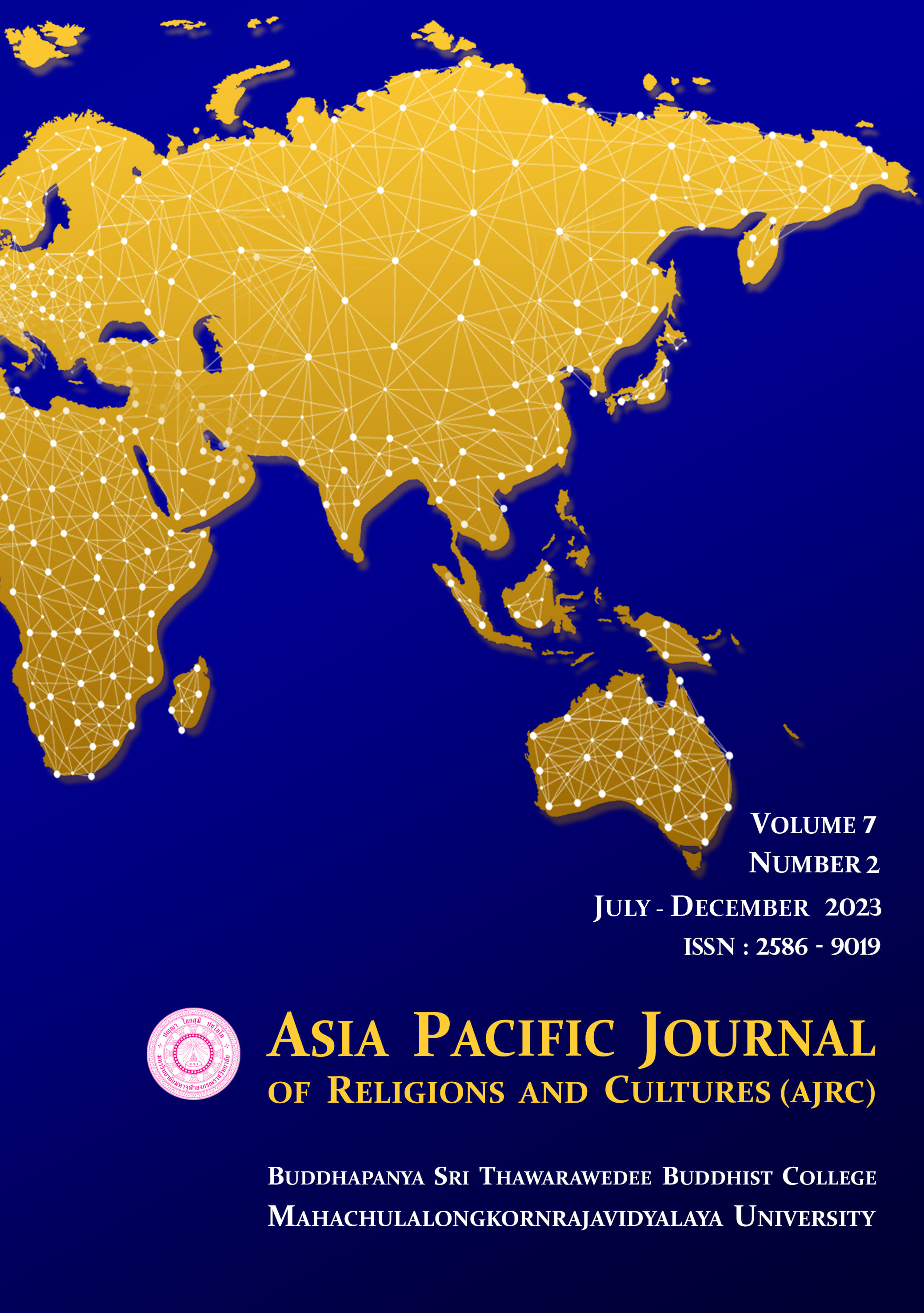PERCEIVED CONTROL HUMAN RESOURCE MANAGEMENT AND INNOVATIVE BEHAVIOR OF CHINESE UNIVERSITY TEACHERS: THE ROLE OF EMOTIONAL COMMITMENT
Main Article Content
Abstract
The research topic “Perceived Control Human Resource Management and Innovative Behavior of Chinese University Teachers: The Role of Emotional Commitment” aims to study 1) To explore the content of the practice of controlling human resources in Chinese universities. 2) To explore the influence of perception-controlled HRM on emotional commitment. 3) To explore the influence of emotional commitment on teachers' innovative behavior, and to reveal the mediating role of emotional commitment between controlling HRM and teachers' innovative behavior. 4) To explore the moderating role of person-post matching between controlling HRM and emotional commitment, and further study its mechanism.
The control of human resource management practice has been questioned. The use of strict control and supervision to manage teachers may lead to excessive pressure on teachers, which can easily lead to dissatisfaction and resistance, leading to the loss of teachers and a decline in organizational performance, affecting work enthusiasm and creativity. To fill this gap, this study is based on related theories and previous studies, based on fairness theory, using structural equation modeling to establish a formative model that can identify the determinants of innovative behavior. Through the study of Guangdong, China The analysis of questionnaire information of 254 teachers in colleges and universities in economically underdeveloped areas of the province shows that the high-performance work system has a significant impact on the control-oriented human resource practice and teachers’ innovative behavior; the mediating role of control-oriented human resource practices and innovative behavior. The results of this study have implications for the development and implementation of high-performance work systems in colleges and universities.
Article Details

This work is licensed under a Creative Commons Attribution-NonCommercial-NoDerivatives 4.0 International License.
References
Becker, J. M., K. Klein, and M. Wetzels. (2012). Hierarchical Latent Variable Models in PLS-SEM: Guidelines for Using Reflective-Formative Type Models. Long Range Planning 45(5-6):359-394.
Bland, J. M., & Altman, D. G. (1997). Statistics notes: Cronbach's alpha. BMJ 314:572. Bmj Clinical Research, 314(7080), 572.
Cable, D. M., and D. S. Derue. (2002). The convergent and discriminant validity of subjective fit perceptions. Journal of Applied Psychology 87(5):875-884.
Chen, Pei, Paul Sparrow, and Cary Cooper. (2016). The relationship between person-organization fit and job satisfaction. Journal of Managerial Psychology 31(5):946-959.
Cherif, F. (2020). The role of human resource management practices and employee job satisfaction in predicting organizational commitment in Saudi Arabian banking sector. International Journal of Sociology and Social Policy ahead-of-print(ahead-of-print).
Clark, Lee Anna, and David Watson. (2016). Constructing validity: Basic issues in objective scale development.
Francescucci, A., and L. Rohani. (2018). Exclusively Synchronous Online (VIRI) Learning: The Impact on Student Performance and Engagement Outcomes. Journal of Marketing Education.
Im, Seunghee, Yang Woon Chung, and Ji Yeon Yang. (2016). Employees’ participation in corporate social responsibility and organizational outcomes: The moderating role of person–CSR fit. Sustainability 9(1):28.
Jafri, Mohd. Hassan. (2010). Organizational Commitment and Employee's Innovative Behavior. Journal of Management Research.
Jehanzeb, Khawaja, and Jagannath Mohanty. (2018). Impact of employee development on job satisfaction and organizational commitment: person–organization fit as moderator. International Journal of Training and Development 22(3):171-191.
Jin, N. C., et al. (2011). Balancing cognition and emotion: Innovation implementation as a function of cognitive appraisal and emotional reactions toward innovation. Journal of Organizational Behavior 32(1):107-124.
Kerry, et al. (1998). Career Commitment, Competencies, and Citizenship. Journal of Career Assessment 6(2):195-208.
Ketut, N., A. Dwijendra, and Nka Dwijendra. (2020). Innovative Work Behaviors in Pharmacies of Indonesia: Role of Employee Voice, Generational Diversity Management and Employee Engagement. Systematic Reviews in Pharmacy 11(2):725-734.
Li Jianding. (2015). Research on the Impact of Person-Job Matching on Organizational Citizenship Behavior. (Master), Harbin Institute of Technology. Available from Cnki.
Lin Congcong. (2016). The impact and mechanism of high-performance work system on employee psychological contract breakdown. (Master), Shandong Normal University. Available from Cnki.
Miao Rentao, Zhou Wenxia & Feng Xiliang (2018). The impact of high-performance work system on the interests of both employers and employers from a two-way perspective: A localization study. Research Management, 39, 9.
Sanmukhiya, C. (2020). Ann Soc Sci Manage Stud A PLS -SEM Approach to the UTAUT Model: The Case of Mauritius.
Shojaei, Mohammad Reza, and Mohadeseh Emadi Siuki. (2014). A study of relationship between emotional intelligence and innovative work behavior of managers. Management Science Letters 4(7):1449-1454.
Sun Wei, & Huang Peilun. (2004). Review of Fairness Theory Research. Science and Technology Management Research, 24(4), 3.
Su Zhongxing. (2010). High-performance Human Resource Management System of Chinese Enterprises in Transition Period: An Empirical Study of Localization. Nankai Management Review (4), 10.
Way, S. A. (2002). High Performance Work Systems and Intermediate Indicators of Firm Performance Within the US Small Business Sector. Journal of Management 28(6):765-785.
Wang Xinyan. (2008). Research on the impact mechanism of knowledge employee organization fairness on work performance. (Doctor), Huazhong University of Science and Technology. Available from CNKI
Wang Zhongjun & Liu Lidan (2017) Can Performance Appraisal Promote University Teachers' Breakthrough Academic Innovation Behavior—An Empirical Study Based on Self-Determination Theory. Higher Education Research, 9.
Wong, Ken Kwong-Kay. (2019). Mastering partial least squares structural equation modeling (PLS-Sem) with Smartpls in 38 Hours: IUniverse.
Wu, P. C. & S. Chaturvedi (2009). The Role of Procedural Justice and Power Distance in the Relationship Between High Performance Work Systems and Employee Attitudes: A Multilevel Perspective. Journal of Management Official Journal of the Southern Management Association, 35, 1228-1247.
Zhongxing, Su. (2010). High performance human resource management system of Chinese enterprises in transition: An Empirical Study of localization. nankai business review (4):10.
Zhao Dongmei. (2013). Comparison of control and commitment human resource management models, Capital University of Economics and Business.
Zhang Jin. (2014). Research on the relationship between salary, teacher organization commitment and job performance and management mechanism in colleges and universities Ph.D., Hebei University of Technology.


